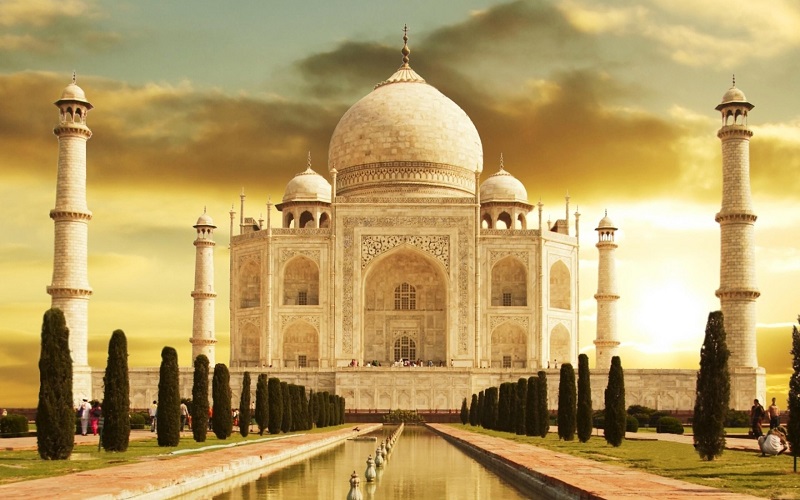Taj Mahal India
The Taj was built by Shah Jahan as a memorial for his third wife, Mumtaz Mahal, who died giving birth to their 14th child in 1631. The death of Mumtaz left the emperor so heartbroken that his hair is said to have turned grey virtually overnight. Construction of the Taj began the following year; although the main building is thought to have been built in eight years, the whole complex was not completed until 1653. Not long after it was finished, Shah Jahan was overthrown by his son Aurangzeb and imprisoned in Agra Fort, where for the rest of his days he could only gaze out at his creation through a window. Following his death in 1666, Shah Jahan was buried here alongside his beloved Mumtaz. In total, some 20,000 people from India and Central Asia worked on the building. Specialists were brought in from as far away as Europe to produce the exquisite marble screens and pietra dura (marble inlay work) made with thousands of semiprecious stones.

The Taj was designated a World Heritage Site in 1983 and looks nearly as immaculate today as when it was first constructed – though it underwent a huge restoration project in the early 20th century. Metodologi penelitian jurnal. • Entry & Information Note: the Taj is closed every Friday to anyone not attending prayers at the mosque. The Taj can be accessed through the and gates.
Taj Mahal India Information

Getting To The Taj Mahal
The Taj Mahal Palace Hotel is a five-star hotel, located next to the Gateway of India, a structure built to commemorate the landing of their Majesties King George V and Queen Mary in 1911. The hotel has 565 rooms, 46 suites, and 11 restaurants. Probably for Taj Mahal, the axiom is just the other way round.The Taj is the beauty personified! The Taj displays its different moods through its varied shades. The Taj has as many shades as any kind of beauty can ever have! The Taj Mahal is an integrated complex of structures that include a white marble mausoleum containing the tombs of the Mughal emperor Shah Jahan (1592 - 1666) and his third wife Mumtaz Mahal (1593.